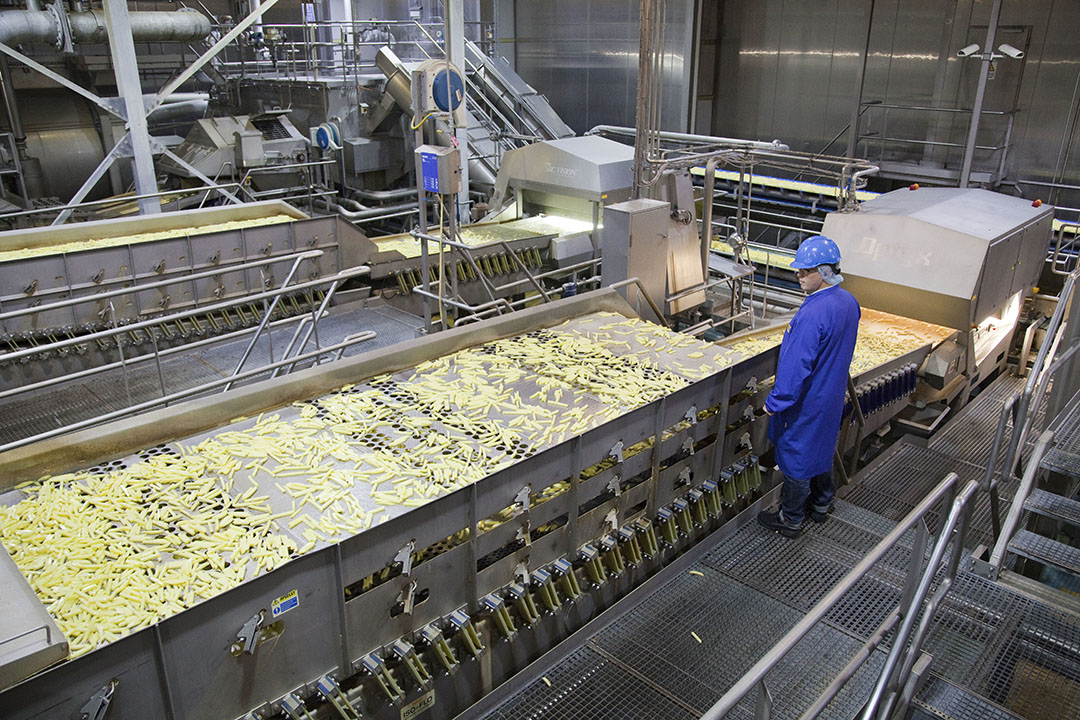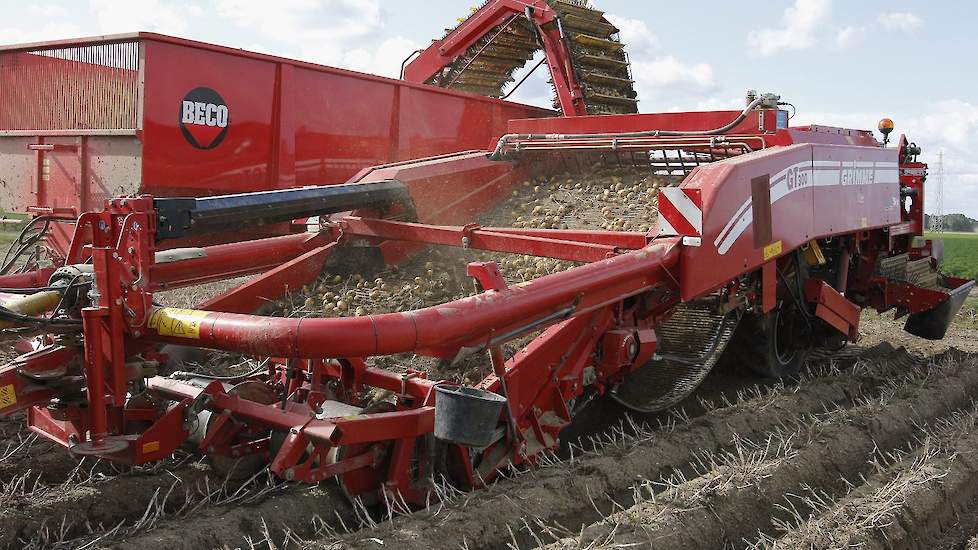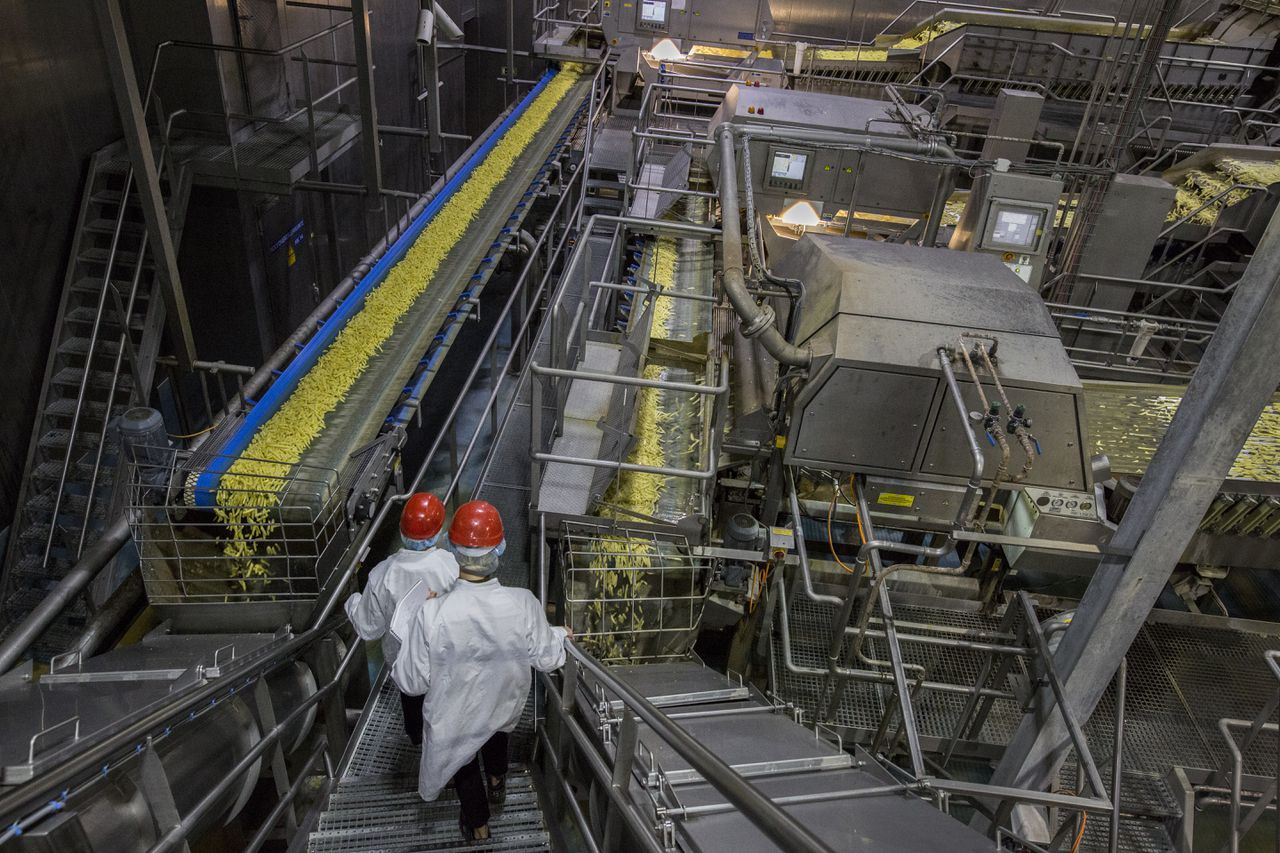Flake factory Aviko Rixona wants to expand in volume and that also means more hectares of the Saprodi variety. In addition to the many positive varietal characteristics, Saprodi also sometimes has setbacks in storage. Solutions are sought in a practice-oriented project. The growers are enthusiastic.

“Saprodi is popular with growers and Rixona,” says Mathijs Meijer, agronomy manager at Aviko Potato. “The variety has many favorable properties for flake production. A high yield, high OWG, a light yellow flesh color, low in sugar and good resistance. Aviko would therefore like to grow in Saprodi. Unfortunately, in addition to good storable batches, we also see batches with rot in storage. So we started a project to find out the causes of those retention problems. The aim is to find leads for an improved cultivation and storage method for this high dry matter variety. ”
Follow cultivation
In the implementation of the project, Aviko Potato is supported by Jacob Eising, an independent potato specialist who has earned his spurs in positions including NAK, potato breeding and cultivation and the introduction of new varieties. Last year he followed and guided 21 Saprodi plots at 16 growers in the northeast of the Netherlands.
Eising: “We mapped out the cultivation approach for each plot and followed the product into storage. During the season, the plots were visited several times to monitor crop development. We looked at all kinds of things. From failures in planting to the appearance of bacteria or other conditions such as rhizoctonia or damage by nematodes. Samples were also taken before harvest and after storage and the batches were monitored in storage. ”
In addition to Eising, the observations also involved employees of Aviko Potato’s Agronomy and Northeast field service department, as well as an intern. “That collaboration went smoothly,” reports Eising. “And the participants are also enthusiastic. The company visits were always pleasant. And the discussion of the results, currently due to corona digital, is also appreciated. ”
Complex of factors
The 2020 season was mainly a learning year for tracing potential causes of the storage problems. Nevertheless, Eising can already name a number of factors that most likely have an influence, which will be further investigated next season. “The quality of the seed potatoes is crucial. Minimizing the number of generations is very important to stay ahead of problems with bacterial diseases. We could already see last year that purchased seed potatoes performed slightly better than our own (ATR) propagation.
Nitrogen addition is also a point of attention. Excessive fertilizer use results in a weaker crop with a lot of foliage. Such a crop is more susceptible to diseases such as verticilium and sclerotinia and rot in the foliage. And the lush foliage growth creates a fungal climate. We have also seen that plots with rhizoctonia often also had more problems with rot. ” Factors that seem to work positively are back building in 2 phases instead of 1 and a 1 in 3 building plan. Neat harvesting and storage without damage also works positively, but according to Eising, most growers already do that. ”

Naturally, the drying process is also of great importance in maintaining the quality of the potatoes. Eising: “At Saprodi you have to ventilate immediately with drying air. That is sometimes difficult because they often come in cold. You actually have to heat up the batch, but not everyone has stoves yet. ” Incidentally, several growers also supply land and / or from the silage, which also offers opportunities, according to Eising. “If you drive the less good plots or places next to the pit, you avoid problems in the shed.”
Origins field
Crop monitoring will be continued in the coming season. “We are going to record crop development and events in the field even more accurately,” says Eising. A number of factors will also be zoomed in further. For example, an origins field is created with tubers from all batches of seed potatoes that the participants will use.
“If possible, we do a PCR test first; then we will follow the batches on the origin field and of course with the growers until they are stored. I expect this will yield a lot of useful information. We are also going to set up practical tests together with growers. For example, we want to look at the effect of a lower fertilizer application in combination with additional fertilization with artificial fertilizers. And we are going to get started with soil treatment against rhizoctonia. ”
Quality preservation process
In the coming season, Eising also wants to pay more attention to the quality of the storage process at the growers. “We start with regular trial harvests to determine the yield and quality of all participating plots. We will then be intensively involved in the process of drying, wound healing and cooling the batches during and shortly after the storage. ”
The results of the project can be directly applied to improve the storability of Saprodi. “That is why the growers would like to cooperate,” concludes Eising.


